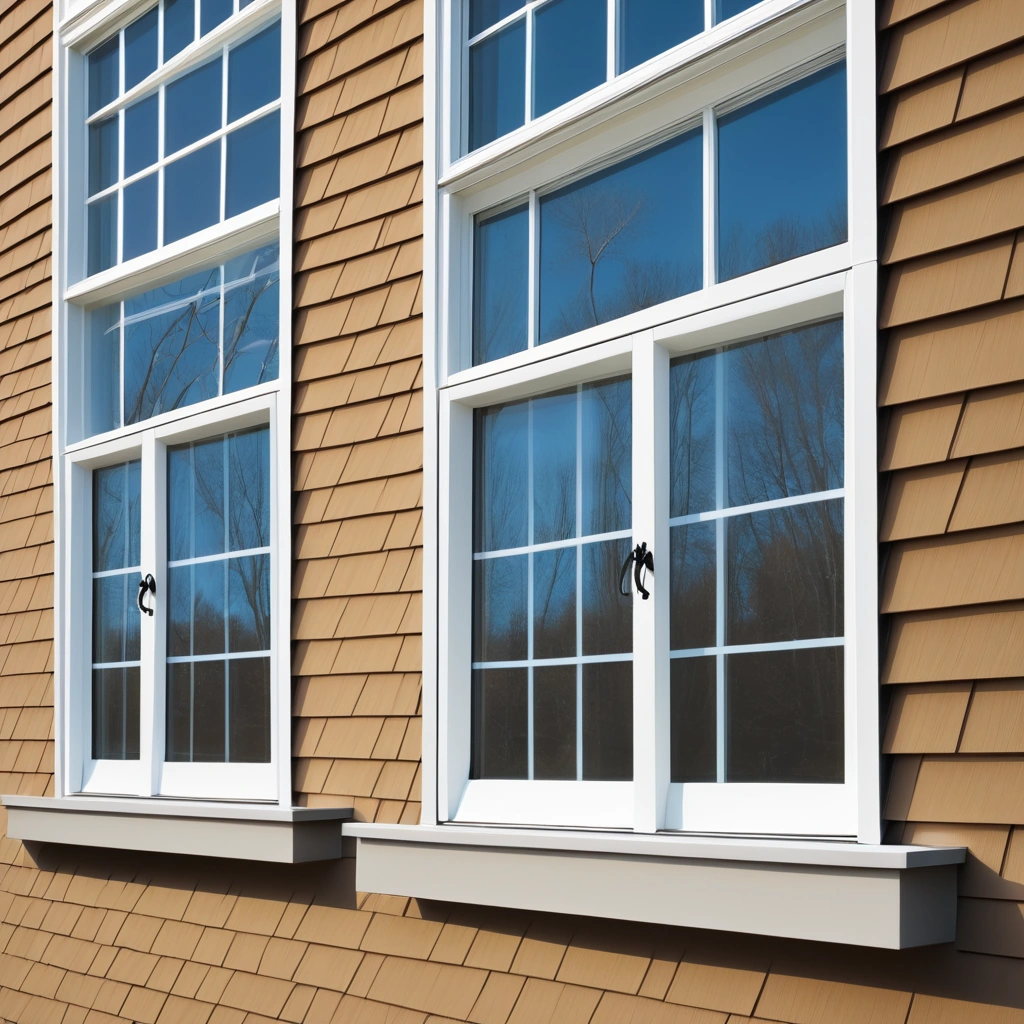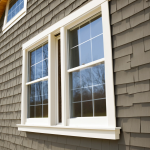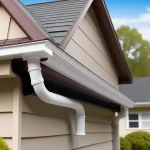Window Frame Materials: A Comprehensive Guide to Durability, Energy Efficiency, and Cost
Introduction: Navigating the World of Window Frame Materials
Choosing the right windows for your home is a significant investment, impacting everything from curb appeal and energy bills to overall comfort and security. A crucial aspect of this decision lies in selecting the appropriate frame material. With a plethora of options available – vinyl, wood, aluminum, fiberglass, and composite – navigating the choices can feel overwhelming. This guide provides a comprehensive comparison of these materials, focusing on long-term durability, maintenance requirements, aesthetic versatility, energy efficiency, and cost, empowering homeowners and contractors to make informed decisions for optimal performance and longevity.
Much like a football club carefully considering its managerial options, as highlighted in discussions around ‘The smart option to replace Klopp?’, where factors like experience, cost, and potential for success are weighed, selecting window frame materials requires a similar strategic approach. For homeowners embarking on a home improvement project or contemplating window replacement, understanding the nuances of window frame materials is paramount. Durable windows not only enhance the structural integrity of a building but also contribute significantly to energy savings.
For instance, opting for energy-efficient window frame materials can drastically reduce heating and cooling costs, a factor that resonates strongly with environmentally conscious homeowners and those looking to minimize their carbon footprint. The initial investment in quality materials often pays for itself over time through reduced energy consumption and lower maintenance expenses. Consider a homeowner in a region with harsh winters; selecting a frame material with excellent insulation properties, like fiberglass or a well-constructed composite, becomes a necessity, not just an aesthetic choice.
When evaluating window replacement options, homeowners often grapple with questions about longevity, upkeep, and aesthetic appeal. Vinyl windows, for example, are celebrated for their low maintenance requirements and affordability, making them a popular choice for budget-conscious renovations. Wood windows, on the other hand, offer a classic, timeless aesthetic but demand regular painting and sealing to prevent rot and decay. Aluminum windows are known for their strength and durability, making them suitable for large window expanses and modern architectural designs, though their thermal conductivity can be a drawback in colder climates.
Fiberglass windows strike a balance between durability, energy efficiency, and aesthetic versatility, often mimicking the look of wood while offering superior resistance to the elements. Composite windows blend various materials to optimize performance, offering a robust and energy-efficient solution with minimal maintenance. Ultimately, the selection of window frame materials should align with the homeowner’s specific needs, budget, and aesthetic preferences. Are you renovating a historic home and aiming to preserve its original character? Wood windows might be the ideal choice, despite the higher maintenance demands. Are you seeking a cost-effective and low-maintenance solution for a modern home? Vinyl windows could be the perfect fit. Or, are you prioritizing energy efficiency and longevity above all else? Fiberglass or composite windows may be the most sensible investment. By carefully weighing the pros and cons of each material, homeowners can make informed decisions that enhance their homes’ value, comfort, and energy performance for years to come.
Defining Key Durability Factors
Before diving into the material-specific comparisons, it’s essential to understand the key factors that contribute to window frame durability. These include Resistance to Rot: This is particularly crucial for wood windows, as moisture can lead to decay and structural damage. Proper sealing and treatment are vital. Resistance to Warping: Temperature fluctuations and humidity can cause some window frame materials to warp, leading to air leaks and operational issues. Dimensional stability is key. Resistance to Fading: Exposure to UV rays can cause certain materials, especially vinyl windows, to fade or discolor over time.
Look for materials with UV inhibitors. Impact Resistance: The ability to withstand impacts from hail, debris, or accidental bumps is important for long-term durability, especially in storm-prone areas. Fiberglass windows and composite windows generally offer superior impact resistance. Beyond these core resistances, consider the crucial role of thermal performance in evaluating durable windows. A window’s ability to resist heat transfer directly impacts energy efficiency and long-term cost savings. Look for window frame materials with low thermal conductivity, such as wood windows, fiberglass windows, and certain composite windows.
Aluminum windows, while strong, are notoriously poor insulators unless they incorporate thermal breaks. According to the Efficient Windows Collaborative, choosing energy-efficient window replacement options can reduce energy bills by up to 15%, making thermal performance a key element of durability in the long run. This is especially relevant as homeowners seek to minimize their environmental footprint and reduce energy consumption. Furthermore, the longevity of window frame materials is inextricably linked to their maintenance requirements. Some materials, like vinyl windows, are virtually maintenance-free, requiring only occasional cleaning.
Others, such as wood windows, demand regular painting or staining to prevent rot and maintain their aesthetic appeal. “The best window is the one that you’ll actually maintain,” advises Sarah Johnson, a lead architect specializing in sustainable home design. “A high-performance wood window that’s left to decay is ultimately less durable than a well-maintained vinyl window.” Understanding the ongoing maintenance commitment associated with each material is critical for ensuring the long-term durability and performance of your window investment.
Finally, consider the subtle but significant impact of proper installation on the overall durability of your windows. Even the most durable window frame materials, such as fiberglass windows or composite windows, will fail prematurely if improperly installed. Gaps around the frame can lead to air and water infiltration, compromising energy efficiency and potentially causing structural damage. Always hire a qualified and experienced window installer to ensure that your windows are properly sealed and secured. Proper installation not only maximizes the lifespan of your windows but also ensures that they perform optimally in terms of energy efficiency and weather resistance. Just as operating systems require updates for optimal performance, windows benefit from modern materials and construction techniques.
Window Frame Material Comparison Chart
Here’s a detailed comparison chart outlining the pros and cons of each window frame material across key criteria. Understanding these nuances is paramount when considering window replacement options, as the long-term performance and cost-effectiveness hinge on selecting the right material for your specific needs and climate. The initial cost is a significant factor, but lifecycle costs, including maintenance, energy savings, and potential resale value, should also be carefully evaluated. Ignoring these long-term considerations can lead to regrettable investments and ongoing expenses, diminishing the overall value of your home.
Choosing durable windows involves a holistic assessment that goes beyond the immediate price tag. Energy efficiency is a crucial consideration when evaluating window frame materials. Different materials possess varying thermal properties, impacting heat transfer and overall energy consumption. For instance, wood windows offer excellent insulation but require regular maintenance to prevent rot and maintain their thermal performance. Vinyl windows, on the other hand, provide good insulation with minimal upkeep, making them a popular choice for energy-conscious homeowners.
Aluminum windows, while strong and durable, are poor insulators and often require thermal breaks to mitigate heat transfer. Fiberglass and composite windows offer a balance of strength, durability, and energy efficiency, making them attractive alternatives. Selecting window frame materials with superior insulation can significantly reduce energy bills and enhance comfort. Beyond energy efficiency and cost, aesthetic considerations play a vital role in the decision-making process. The architectural style of your home should influence your choice of window frame materials.
Wood windows, with their classic appeal, are often preferred for historic homes, while vinyl windows offer a more modern and versatile look. Aluminum windows can complement contemporary designs, while fiberglass and composite windows can mimic the appearance of wood while providing enhanced durability. Ultimately, the best window frame material is one that aligns with your aesthetic preferences, complements your home’s architecture, and delivers the desired performance characteristics. By carefully weighing these factors, homeowners can make informed decisions that enhance their homes’ value, comfort, and energy efficiency.
Best Applications for Each Material
The best application for each material hinges on a nuanced understanding of climate, architectural style, and budgetary constraints. Selecting durable windows involves a strategic alignment of these factors with the inherent properties of each window frame material. Vinyl windows, for instance, excel in moderate climates where extreme temperature fluctuations are minimal. Their affordability and minimal maintenance requirements make them a compelling choice for budget-conscious homeowners and contemporary architectural designs. While vinyl offers excellent resistance to moisture and rot, it may not be the optimal choice for historic homes seeking authentic aesthetics or regions with harsh weather conditions.
The proliferation of vinyl windows as a popular window replacement option underscores their practicality and cost-effectiveness. Wood windows, conversely, are ideally suited for historic properties and homeowners prioritizing a traditional aesthetic. The unparalleled beauty and design flexibility of wood allow for seamless integration with classic architectural styles. However, wood requires regular maintenance, including painting and sealing, to prevent rot and decay, particularly in climates with high humidity. Investing in high-quality wood windows and committing to a consistent maintenance schedule are crucial for preserving their longevity and aesthetic appeal.
Wood windows offer a warmth and character unmatched by other window frame materials. Aluminum windows are well-regarded for their strength and corrosion resistance, making them a suitable option for coastal regions and modern commercial buildings. However, aluminum’s high thermal conductivity makes it less energy-efficient than other window frame materials, potentially leading to increased heating and cooling costs. Consider incorporating thermal breaks into aluminum frames to mitigate heat transfer and improve energy performance. Aluminum windows offer a sleek, contemporary aesthetic but may not be the most energy-efficient choice for residential applications.
Fiberglass windows represent a premium window replacement option, offering exceptional durability and energy efficiency, making them well-suited for extreme climates. Their ability to withstand harsh weather conditions and resist warping, cracking, and rotting makes them a long-lasting investment. Fiberglass windows work well with various architectural styles but typically come at a higher price point than vinyl or aluminum. The superior performance and longevity of fiberglass windows often justify the initial investment, particularly in demanding climates.
Composite windows offer a balanced blend of durability, energy efficiency, and aesthetic appeal. These window frame materials combine the strength of wood with the low maintenance of vinyl, resulting in a versatile option suitable for various climates and architectural styles. Composite windows can be a cost-effective alternative to wood or fiberglass, providing a durable and energy-efficient solution without compromising on aesthetics. Exploring composite window options can lead to a well-rounded solution for homeowners seeking both performance and value. Ultimately, selecting the right window frame materials requires careful consideration of your specific needs, climate, and budget. Consulting with a qualified contractor is essential to assess your individual requirements and ensure a proper installation. Remember, factors such as local climate conditions and the orientation of your home can significantly impact the performance of different window frame materials.
Expert Tips and Addressing Common Misconceptions
Here are some expert tips to consider when selecting window frame materials. Prioritize energy efficiency by looking for windows with low U-factors and Solar Heat Gain Coefficients (SHGC) to minimize energy loss. These ratings indicate how well a window insulates and blocks solar heat, respectively. Energy Star certified windows, regardless of frame material, meet specific performance criteria and can significantly reduce heating and cooling costs. For instance, upgrading to energy-efficient window replacement options can lower energy bills by 7-15%, according to the U.S.
Department of Energy, making it a worthwhile investment in the long run. Selecting durable windows that meet these standards ensures both comfort and financial savings. Consider your climate when choosing window frame materials, as different materials respond differently to environmental conditions. In areas with extreme temperatures, fiberglass windows or composite windows offer excellent thermal performance and resistance to expansion and contraction. Coastal regions require materials that can withstand high humidity and salt spray; vinyl windows and certain types of aluminum windows with protective coatings are well-suited for these environments.
Wood windows, while aesthetically pleasing, may require more frequent maintenance in damp climates to prevent rot and decay. Thoughtful selection ensures longevity and reduces the need for premature window replacement. Think long-term by factoring in the maintenance requirements and lifespan of each material to determine the true cost of ownership. While vinyl windows are generally low-maintenance, wood windows require regular painting or staining to protect them from the elements. Aluminum windows can be susceptible to corrosion in certain environments, while fiberglass windows offer exceptional durability and resistance to weathering.
Composite windows, made from a combination of materials, aim to provide the best of both worlds – durability and low maintenance. Understanding these long-term implications helps in making an informed decision that aligns with your budget and lifestyle. Don’t neglect aesthetics; select a material that complements your home’s architectural style and personal preferences. Window frame materials play a crucial role in the overall look and feel of your home. Get multiple quotes from different contractors and suppliers to ensure you’re getting a fair deal on your window replacement options.
Prices can vary significantly depending on the material, brand, and installation costs. Obtain detailed estimates that outline all expenses involved, including the cost of the windows, installation labor, and any additional fees. Comparing quotes allows you to negotiate effectively and make a financially sound decision. Common misconceptions include the belief that all vinyl windows are the same (quality varies significantly based on construction and materials used) or that wood windows are inherently energy inefficient (modern wood windows can be highly energy efficient with proper construction and glazing techniques, often incorporating insulated glass and weather stripping). By addressing these misconceptions and carefully considering the factors outlined in this guide, you can confidently select the right window frame materials for optimal performance, longevity, and aesthetic appeal.


